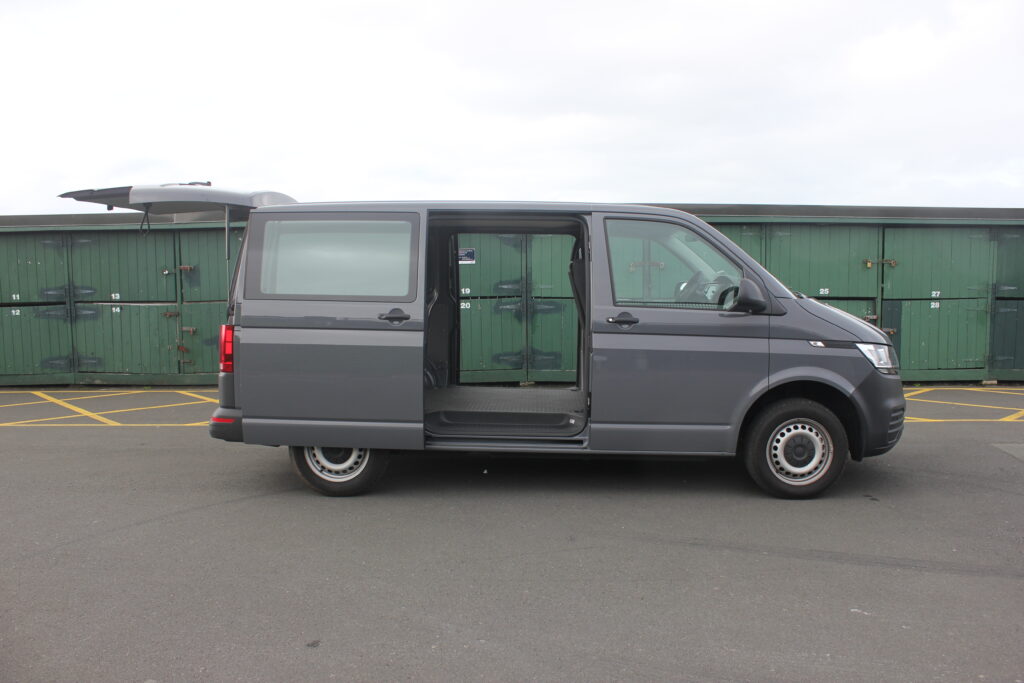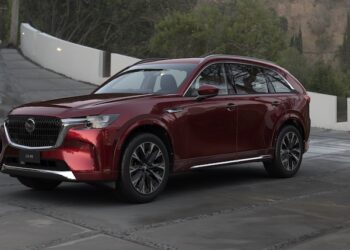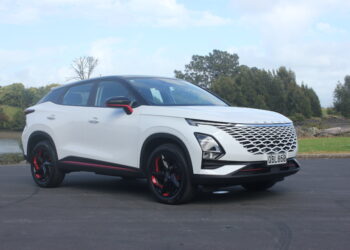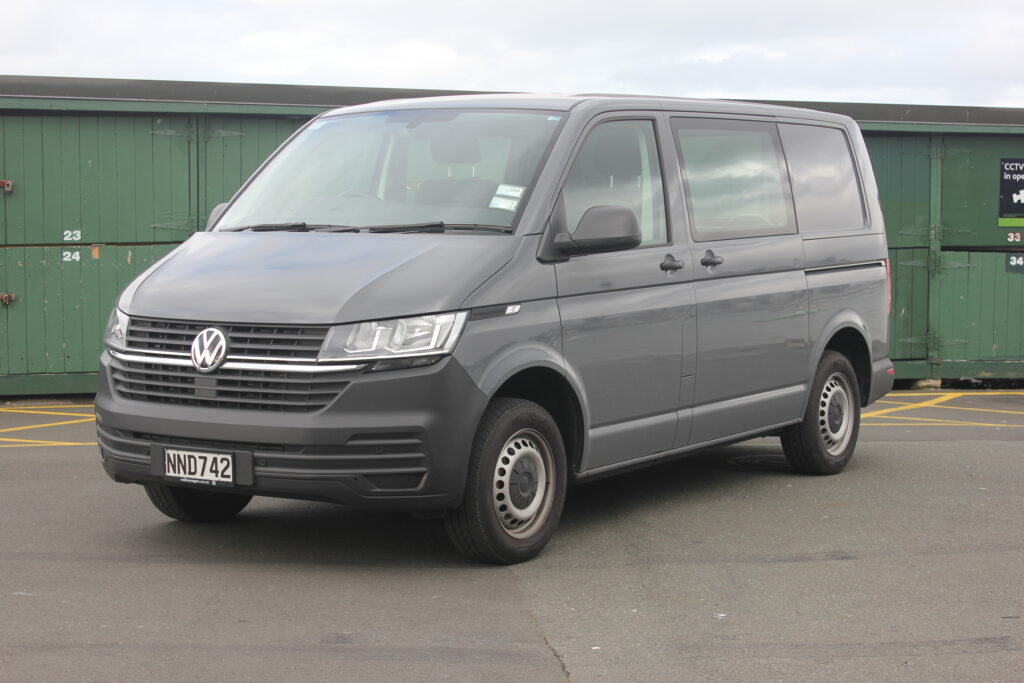
Volkswagen Commercial Vehicles New Zealand is heading towards an interesting time.
The company has long had a fourproduct line-up: the Amarok ute and variants of the Caddy, Transporter and Crafter vans. Things are set for change.
First, the Amarok is switching from an in-house design to a vehicle based on the market-leading Ford Ranger. I suspect that will only make the model more popular.
But VW’s New Zealand van range is changing, specifically the mid-sized Transporter.
Instead of just the one van with its various derivatives, there are set to be three platforms, the new T7 passenger van range based on a car platform, the upcoming I.D Buzz all-electric series, and the vehicle tested today, the T6.1.
To suggest there are three prongs to the Transporter fork is an understatement, as each model has multiple options.
For example, the 6.1 is available in two wheelbases and even has a California spin-off. Add on to that a customisation list as long as your cargo racking, and well, I wouldn’t want to be a product manager having to forecast and order stock in advance.
The flip side to that is if you’re shopping for a fleet, Volkswagen can deliver whatever it is you need.
And when I put my mind to it and think of the Transporters I’ve seen at work in the field, they certainly are well represented in the world of properly kitted out work tools, rather than just a van with a few boxes of gear thrown in the back.
Simply speccing your T6.1 at the dealership is an adventure. You have two specifications, Runner or Trendline (the one we tested), two lengths, and enough choices to fill a few other pages.
All-wheel drive? You can have that. GVM upgrade? Sure. Barn doors? Yup. A high roof? Plywood cargo bay sides and lashings? Why wouldn’t you.
Of course, all those things come at a price that’s at the upper end of the market, though arguably competitive. The range starts at $50,500 for the Runner manual, while our Trendline SWB is $66,000.
You can have the long-wheelbase for $3000 more and 4Motion all-wheel drive for another $6000. At the time of writing most models attracted a $747.50 clean car fee.
A unique option is the ability to upgrade your engine. Spending $4000 extra on Trendline takes you from the already healthy 110kW and 340Nm version of the 2.0-litre turbocharged diesel to a hefty 146kW and 450Nm.
The warranty on all Transporters runs five years or 150,000km, and sixyears/90,000km of servicing will set you back $2245.
For basic delivery work the Runner offers value, but for anyone who will spend significant time in the vehicle, the upgrade to the Trendline is worth it.
Not only does it get a few comfort upgrades and useful items like a rubber covered rear floor, it allows you to access options from the catalogue that aren’t extended to the Runner.
That load area itself is good with great access from both side doors, a low, flat entry from the rear, the rubber floor and plenty of tie-downs.
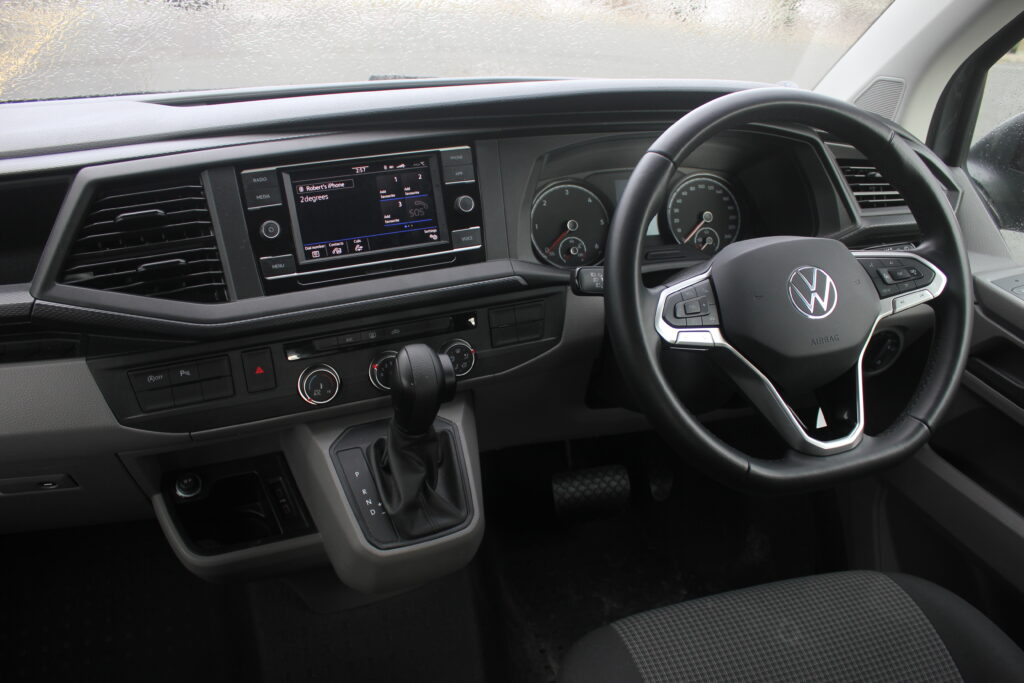
You get 5.8 cubic metres of space in the SWB, 6.7 in the LWB. Overall load length in the SWB tested is 2324mm measured at floor level, width is 1244mm between the wheelarches and 1700mm overall. Height is 1410mm.
The cabin will feel familiar to anyone who has driven any Volkswagen product in recent years. It’s very passenger car-like with the commercial vehicle twister of lots of storage.
There’s an infotainment screen with Apple CarPlay and Android Auto and manual air-conditioning. A few more USB points would be appreciated, like the one that’s on the dash top in the Ford Transit Custom.
The seats are great, with the Trendline optioned for a two person bench on the left; a single passenger seat is a no cost option. The Transporter lacks a fold-down armrest or document storage tray common to other vans, but I wonder if this was sacrificed in the interest of comfort rather than cost.
The safety feature list is solid, but not class-leading. Electronic stability control, autonomous emergency braking, crosswind assist, a lane change system, a rear camera, front and rear parking sensors and a driver alert system make up the standard kit.
That list falls behind the Toyota Hiace and Hyundai Staria, both of which carry a five-star ANCAP safety rating, while the T6.1 is unrated. Just two airbags are standard, with side and curtain options a must-tick $850 option.
The Transporter drives very well. Its stubby nose and high seating position make for great visibility, the steering is quick and responsive and the van tracks more like a passenger car than a van.
Unladen, the ride is even good. The turbodiesel provides plenty of punch, even in this lower output version.
The T6.1 makes for a solid and compelling option, but it’s all about choice.
You need to build the Transporter that’s right for you, and that’s great, but it comes at a cost.
However, in fleets the ability to build the perfect van for your workers could offer so many advantages that even a higher purchase price provides great value in the longer run.
